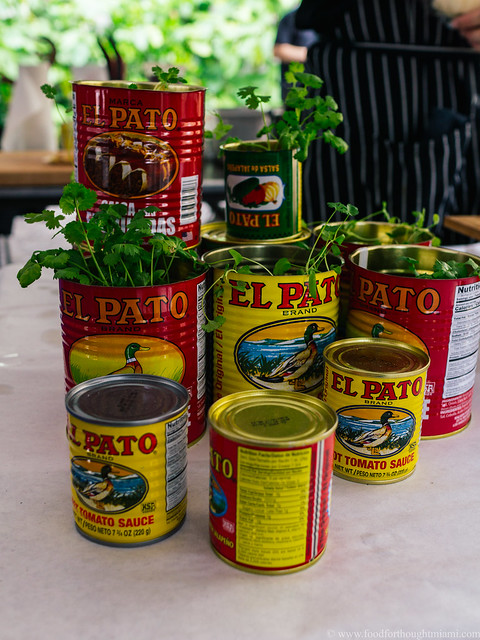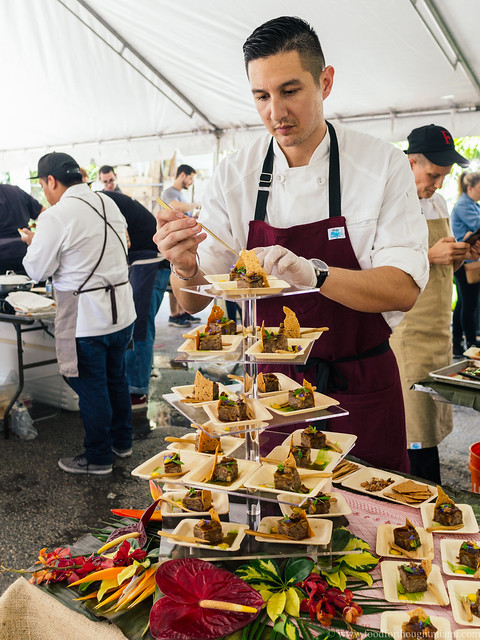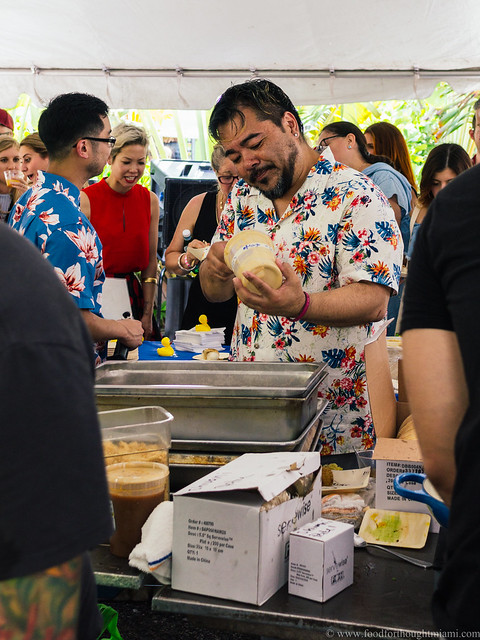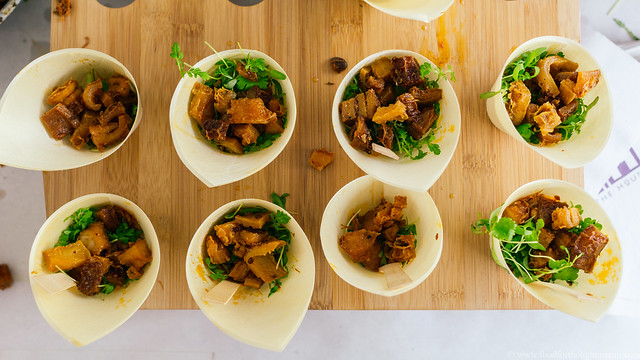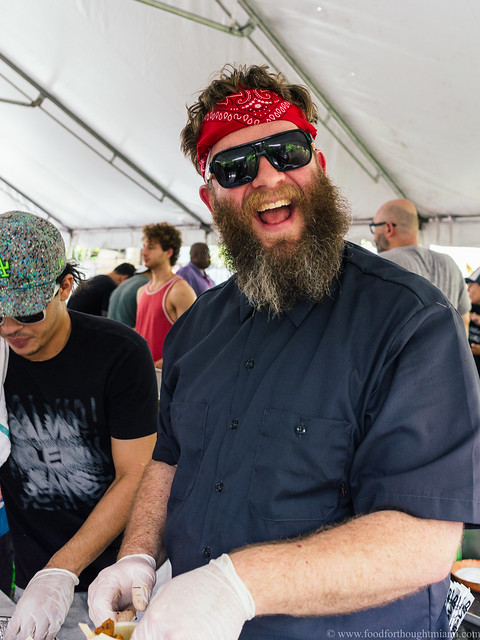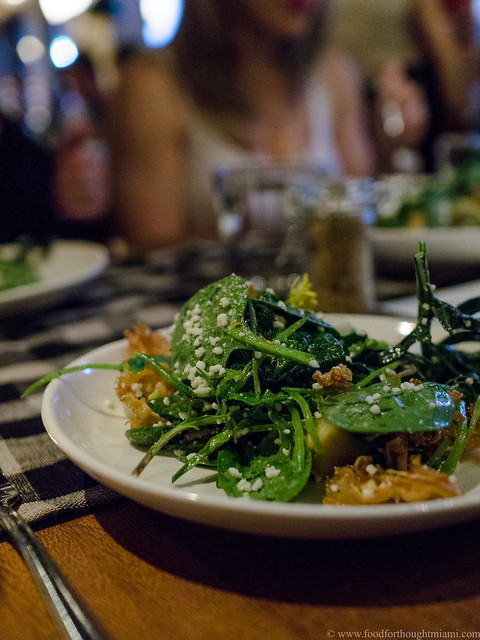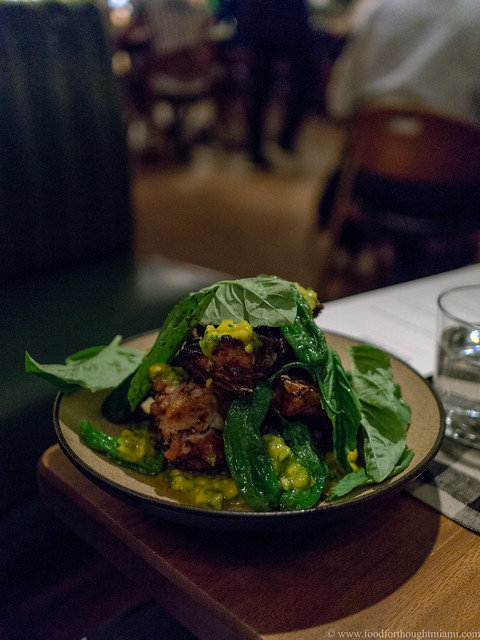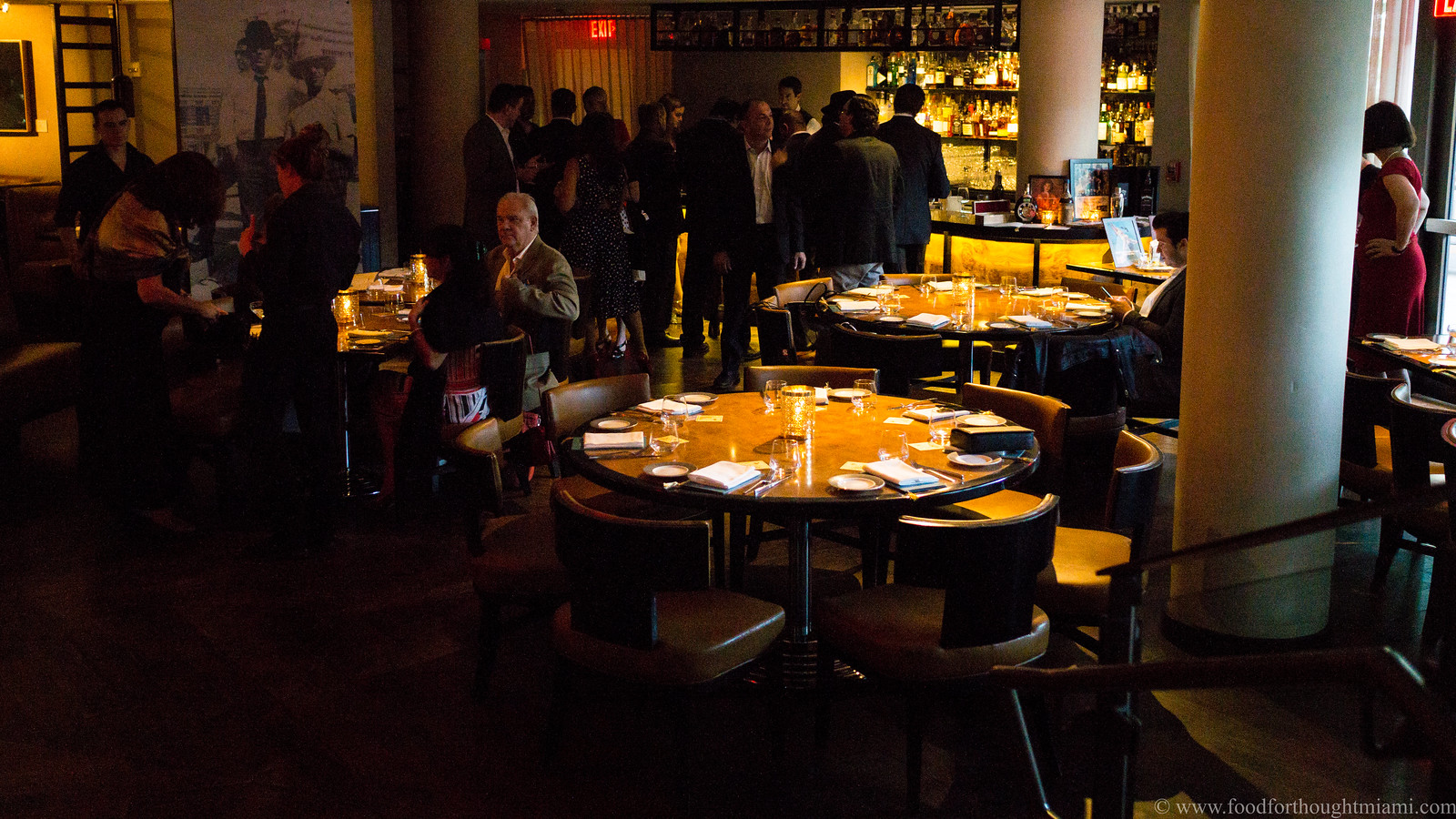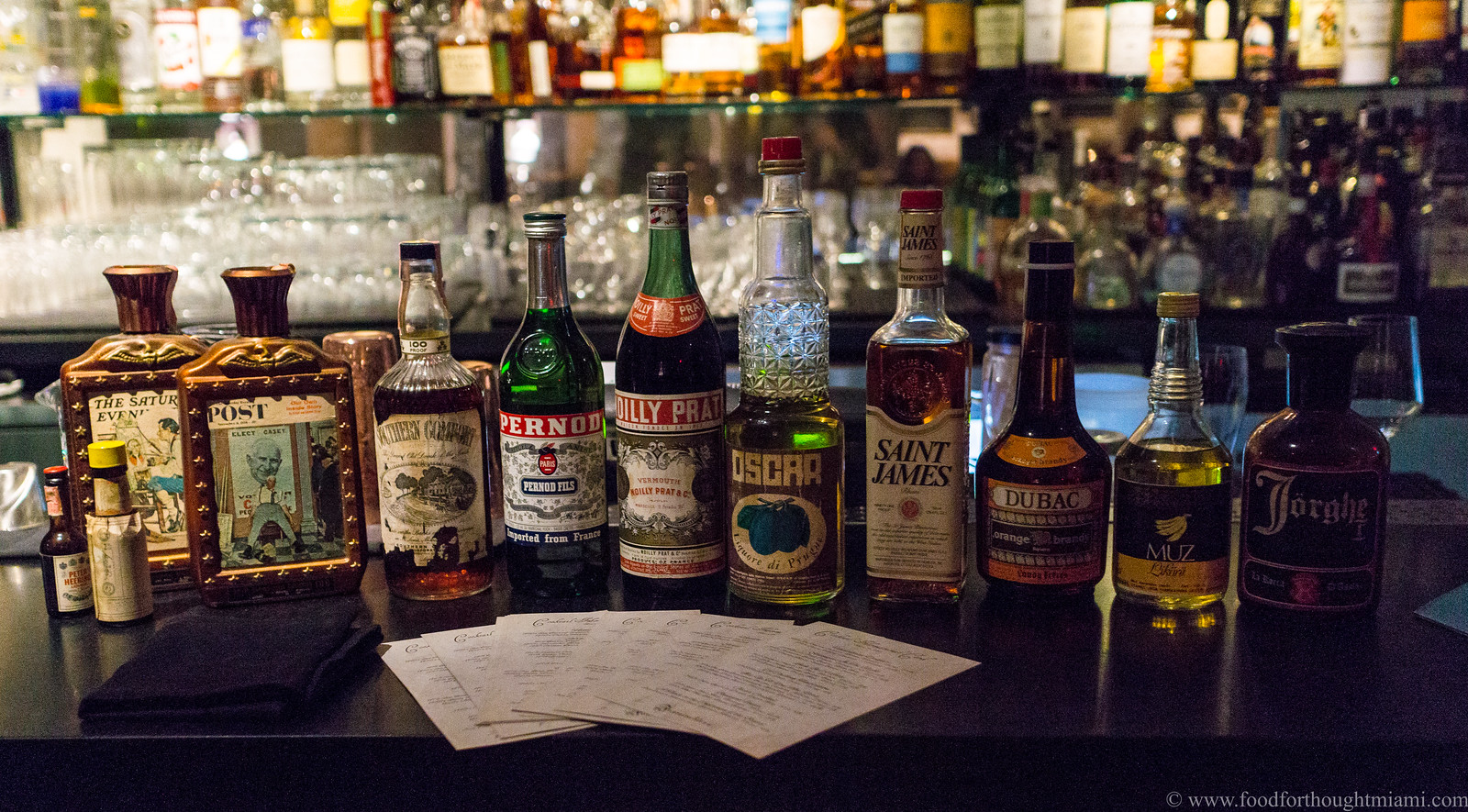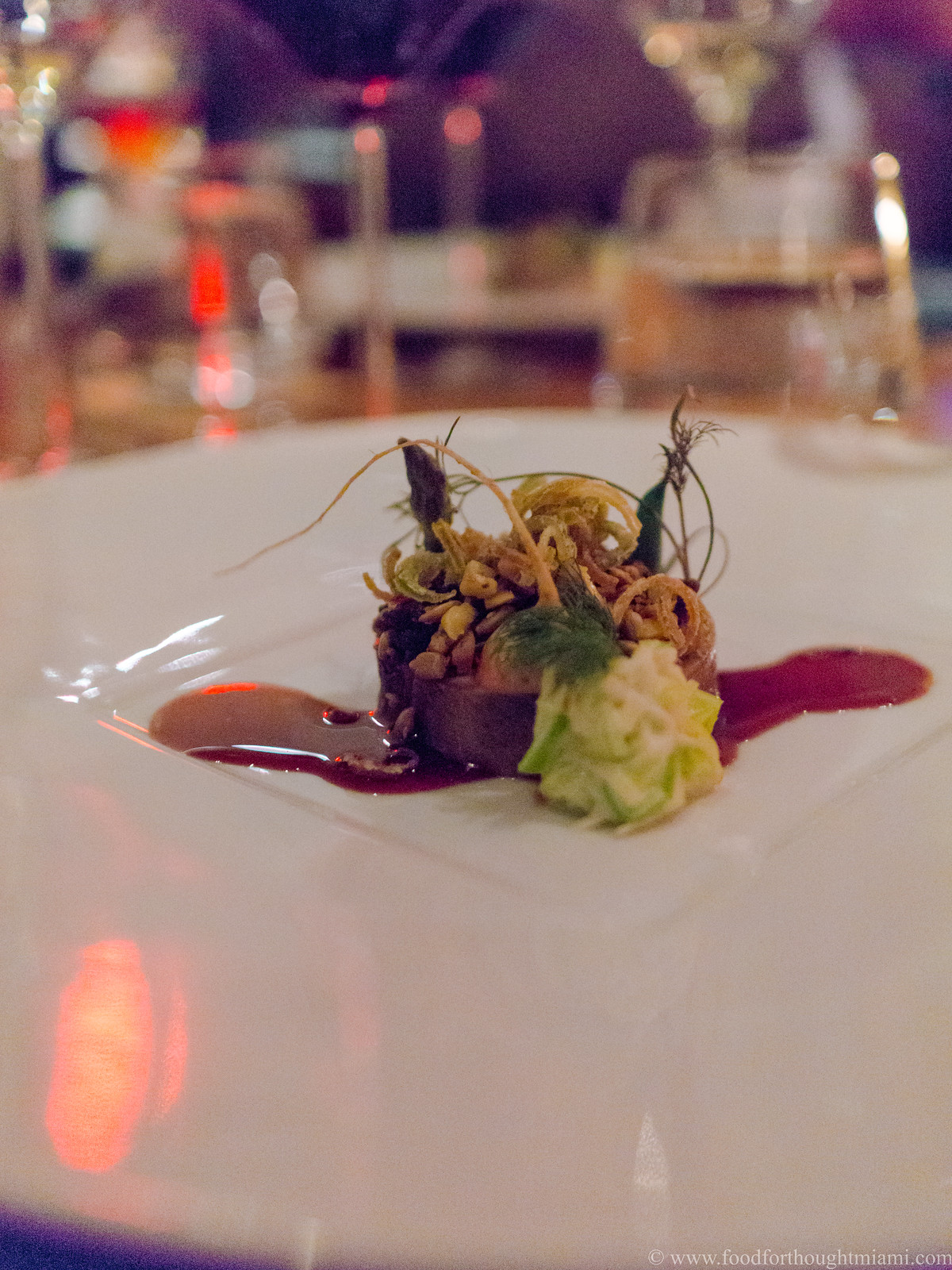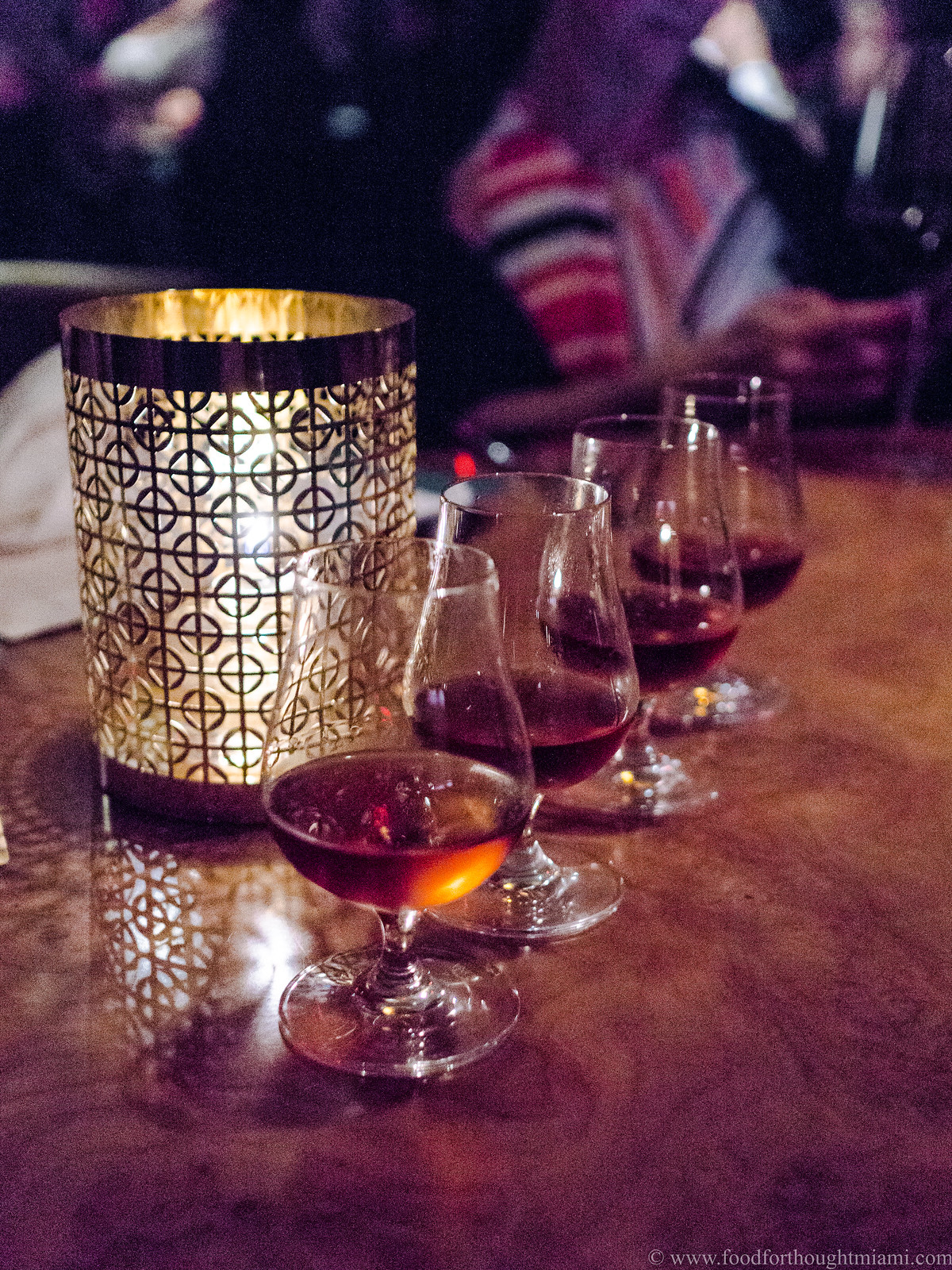"Abandon care and enter light-hearted ...
for this is the Poodle Room, the exquisite tongue-in-cheek room,
and here life is never quite serious! Lift your cocktails
in an atmosphere reminiscent of an intimate salon in a French palace ...
its damask decor a background for paintings of poodles
with an amusing resemblance to Fragonard's playful courtiers and ladies."
There were no paintings of poodles, but just about everything else from our
Cobaya dinner at
Stripsteak a couple weeks ago hearkened back to the era of the
Poodle Room, a cozy bar from the opening days of the
Fontainebleau resort. Designed by architect Morris Lapidus and completed in 1954, the Fontainebleau was maybe the most ostentatious example of the grand but playful "Miami Modern" style, and quickly became a popular playground for the rich and famous. Frank Sinatra and the "Rat Pack" hung out here. Elvis performed here after he returned from military service. Movies were filmed here, including Jerry Lewis' "
The Bellboy" and scenes from "
Goldfinger" My in-laws (neither rich nor famous, but long-time Miami Beach denizens) used to go see shows at
La Ronde nightclub.
With all that history to play with, Stripsteak chef William Crandall and bar director Seth Weinberg went with a "Time Machine" theme for our dinner. They found postcards, matchbooks and swizzle sticks from the hotel's first days, scoured old menus for historical dishes, and maybe most remarkably, sourced spirits all from the 1950's through 1970's for cocktail pairings to go with the dinner. It was a pretty remarkable and fully realized experience.
You can see all my pictures in this
Cobaya Fontainebleau 1954 flickr set. Here's a rundown of the evening.
Once our guests arrived, they were offered a Hemingway Daiquiri made with 1970's era Bacardi Superior rum and 1950's era Cherry Heering, along with grapefruit juice and lime. Then they were shown downstairs to the "Poodle Room" – a corner of the Stripsteak dining room conveniently situated next to the bar.
That bar counter was lined with spirits that were anywhere between forty and sixty years old, some recognizable – Southern Comfort, Pernod, Noilly Prat Vermouth – and some rather mysterious – Oscar Liquore di Prugne?
Chef Crandall had dug through old menus from the Fontainebleau to look for inspiration, and his lineup featured dishes that you very well may have eaten at the hotel's restaurants way back when, but prepared with modern cooking sensibilities. A disk of creamy, rich foie gras torchon came dappled with a peppered port wine sauce and a quenelle of soft, melted julienned leeks, very old school, but also a crispy pumpernickel crumble in place of the traditional toast points. With this, Seth poured something he called "Strangers in the Night," a sweet-leaning concoction of Barres Colheito Porto from 1979, 1950's
Stravecchio Branca (an oak-aged Italian brandy), and 1957 Chateau Thierry orange bitters.
I thought it was smart that they didn't quite try to serve each cocktail with a particular dish, but instead would often serve them between courses, as the strong flavors could easily overwhelm more delicate dishes. This was especially so because Seth took his "Time Machine" mission pretty literally: than the citrus in the opening daiquiri, literally everything in the other cocktails came from another era. This made for some very spirit-forward drinks, which is how I usually like them, but can be a tough match with food. For the next round, and sticking with the Sinatra theme, there was a drink he called "Luck Be a Lady" –1962 Southern Comfort (higher proof and less sweet than the current version), 1972 Dubac Orange Brandy, and 1974 Jorghe Amaro, which brought a potently herbaceous, almost medicinal kick.

This is the kind of dish you never see any more: sole bonne femme, the traditional mushroom accompaniment taking the form of a fluffy wild mushroom mousseline as well as some shingles of black truffle, plus some confit shallots on top and a caviar speckled hollandaise alongside. Back in the day, sole would often be fileted and served tableside; we could have used some of that tableside service, or at least a heads-up that the fish was being served bone-in, as I got a mouthful of bones before realizing it. And the fish possibly could have cooked a bit more, to pull more cleanly away from the bone. But I thought the flavors here were a worthy take on the classic.
(continued ...)

